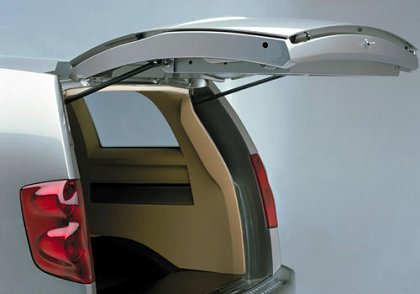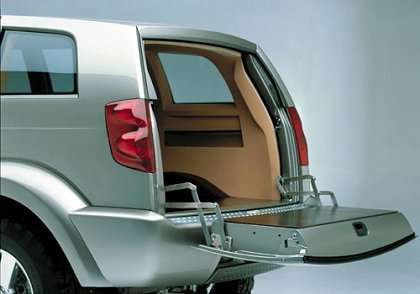The 2001 Dodge Powerbox Concept was a bold statement from the American automaker, showcasing their vision for a powerful yet environmentally friendly SUV. Unveiled at the 2001 Greater Los Angeles Auto Show, the Powerbox aimed to bridge the gap between performance, utility, and fuel efficiency.
Combining Power and Efficiency:
Hybrid Powertrain: The Powerbox featured a unique combination of a supercharged 2.7-liter V6 engine burning clean compressed natural gas (CNG) and a 70-horsepower electric motor. This combination delivered an impressive 320 horsepower while achieving a projected 25 mpg fuel economy, a significant improvement over comparable SUVs.
Performance: The Powerbox offered acceleration comparable to a sports car, reaching 0-60 mph in around 7 seconds.
Environmental Friendliness: The CNG engine and electric motor resulted in near-zero emissions, making the Powerbox a more environmentally conscious option.
Rugged Design and Spacious Interior:
Muscular Exterior: The Powerbox's design embodied the "Dodge DNA" with bold styling cues, large fenders, and a crosshair grille reminiscent of the classic 1946 Power Wagon.
Spacious Interior: The Powerbox offered seating for eight passengers, 24% more than the contemporary Dodge Durango, and boasted ample cargo space with a unique combo-gate rear door for flexible loading options.
Lightweight Construction: The body utilized a lightweight, recyclable thermoplastic material, contributing to improved fuel efficiency.
Legacy and Influence:
While the Powerbox never entered production, it served as a glimpse into the future of hybrid technology and sustainable SUVs. Some design elements, like the bold front fascia, influenced the second-generation Dodge Durango launched in 2004. The Powerbox remains a testament to Dodge's innovative approach to merging power and environmental responsibility in the SUV segment.
Images: DaimlerChrysler






































